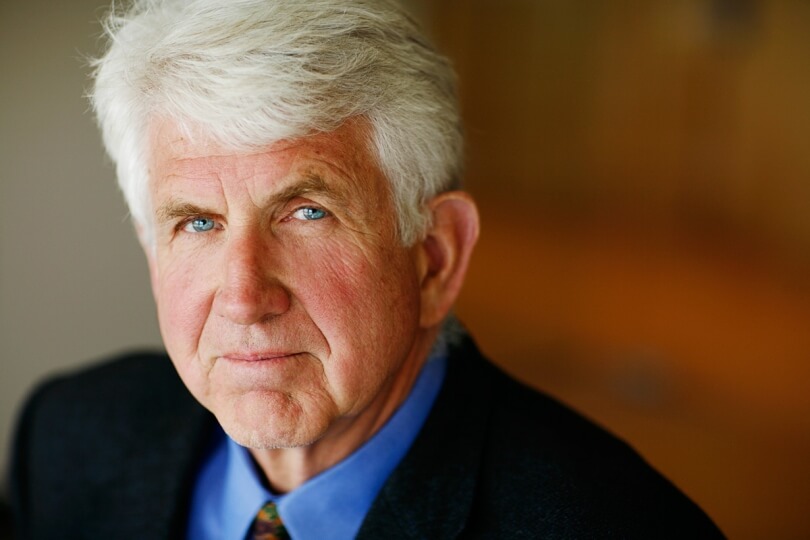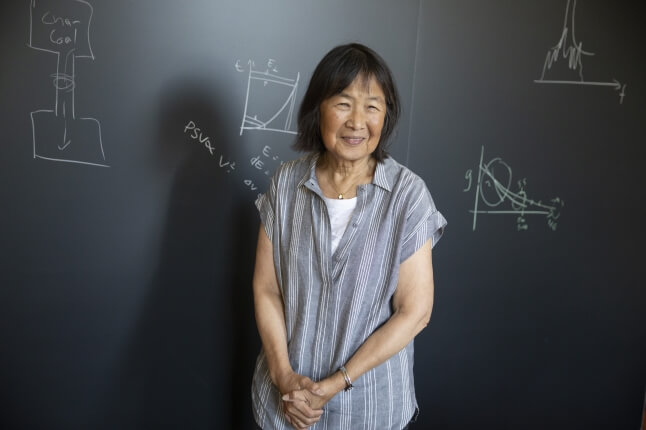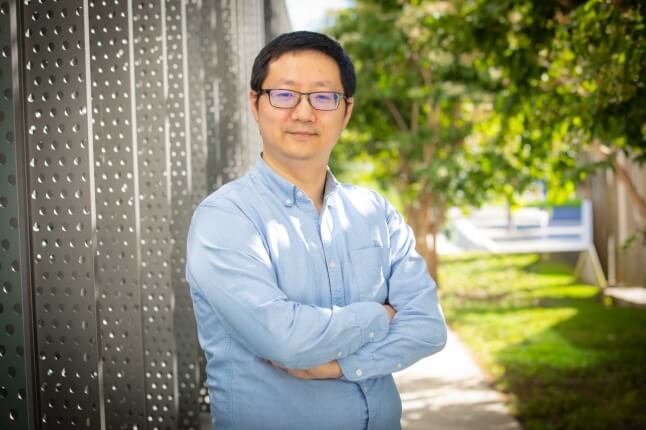News
ACM, the Association for Computing Machinery, today named Bob Metcalfe as recipient of the 2022 ACM A.M. Turing Award for the invention, standardization, and commercialization of Ethernet.
Metcalfe, who earned a PhD in mathematics from Harvard Griffin GSAS in 1973, is an Emeritus Professor of Electrical and Computer Engineering at the University of Texas at Austin and a research affiliate at MIT’s Computer Science & Artificial Intelligence Laboratory.
The ACM A.M. Turing Award, often referred to as the “Nobel Prize of Computing,” carries a $1 million prize with financial support provided by Google, Inc. The award is named for Alan M. Turing, the British mathematician who articulated the mathematical foundations of computing.
“Today, we all walk around with pocket-sized computers and many of us work on keyboards all day long. But we barely know or notice where our computing is actually being done or where our data are stored, because all these personal devices are so seamlessly connected to each other and to big machines in unknown locations,” said Harry Lewis, one of Metcalfe’s PhD classmates who today is Gordon McKay Research Professor of Computer Science at SEAS. “Bob Metcalfe not only pioneered the development of these personal computer networking technologies in Cambridge in the 1970s — he was the leader in commercializing his inventions over the subsequent decades. Few people can lay claim to that kind of birth-to-maturity influence over a world-changing and now ubiquitous technology."
Invention of The Ethernet
After Harvard, Metcalfe went to work as a computer scientist at the Xerox Palo Alto Research Center (PARC). There, he circulated a now-famous memo describing a “broadcast communication network” for connecting some of the first personal computers, PARC’s Altos, within a building. The first Ethernet ran at 2.94 megabits per second, which was about 10,000 times faster than the terminal networks it would replace.
Although Metcalfe’s original design proposed implementing this network over coaxial cable, the memo envisioned “communication over an ether,” making the design adaptable to future innovations in media technology including legacy telephone twisted pair, optical fiber, radio (Wi-Fi), and even power networks, to replace the coaxial cable as the “ether.” That memo laid the groundwork for what we now know today as Ethernet.
Metcalfe’s Ethernet design incorporated insights from his experience with ALOHAnet, a pioneering computer networking system developed at the University of Hawaii. Metcalfe recruited David Boggs (d. 2022), a co-inventor of Ethernet, to help build a 100-node PARC Ethernet. That first Ethernet was then replicated within Xerox to proliferate a corporate internet.
In their classic 1976 Communications of the ACM article, “Ethernet: Distributed Packet Switching for Local Computer Networks,” Metcalfe and Boggs described the design of Ethernet. Metcalfe then led a team that developed the 10Mbps Ethernet to form the basis of subsequent standards.
Standardization and Commercialization
After leaving Xerox in 1979, Metcalfe remained the chief evangelist for Ethernet and continued to guide its development while working to ensure industry adoption of an open standard. He led an effort by Digital Equipment Corporation (DEC), Intel, and Xerox to develop a 10Mbps Ethernet specification—the DIX standard. The IEEE 802 committee was formed to establish a local area network (LAN) standard. A slight variant of DIX became the first IEEE 802.3 standard, which is still vibrant today.
As the founder the Silicon Valley Internet startup, 3Com Corporation, Metcalfe bolstered the commercial appeal of Ethernet by selling network software, Ethernet transceivers, and Ethernet cards for minicomputers and workstations. When IBM introduced its personal computer (PC), 3Com introduced one of the first Ethernet interfaces for IBM PCs and their proliferating clones.
Today, Ethernet is the main conduit of wired network communications around the world, handling data rates from 10 Mbps to 400 Gbps, with 800 Gbps and 1.6 Tbps technologies emerging. Ethernet has also become an enormous market, with revenue from Ethernet switches alone exceeding $30 billion in 2021, according to the International Data Corporation.
Metcalfe insists on calling Wi-Fi by its original name, Wireless Ethernet, for old times’ sake.
Metcalfe joins more than a dozen Harvard affiliates who have received the Turing Award since its inception in 1966, including faculty members Michael Rabin (1976), Kenneth Iverson (1979) Ivan Sutherland (1988), Edmund Clarke (2007) and Leslie Valiant (2010) and alumni Marvin Minsky, ’50, (1969); Stephen Cook, ’61, (1982); Dennis Ritchie, ’68, (1983); Richard Karp, ’59, (1985); Butler Lampson, ’64, (1992); Frederick Brooks, ’56, (1999); Andrew Yao, ’72, (2000); and E. Allen Emerson, ’81, (2008); as well as Barbara Liskov, who worked at Harvard as a computer programmer during the early 1960s.
Metcalfe will be formally presented with the ACM A.M. Turing Award at the annual ACM awards banquet in June in San Francisco.
Biographical Background
Metcalfe graduated from MIT in 1969 with bachelor’s degrees in electrical engineering and industrial management before earning a PhD in mathematics in 1973 from the Harvard Griffin Graduate School of Arts and Sciences.
Metcalfe’s honors include the National Medal of Technology, IEEE Medal of Honor, Marconi Prize, Japan Computer & Communications Prize, ACM Grace Murray Hopper Award, and IEEE Alexander Graham Bell Medal. He is a Fellow of the US National Academy of Engineering, the American Academy of Arts and Sciences, and the National Inventors, Consumer Electronics, and Internet Halls of Fame.
Cutting-edge science delivered direct to your inbox.
Join the Harvard SEAS mailing list.
Press Contact
Paul Karoff



